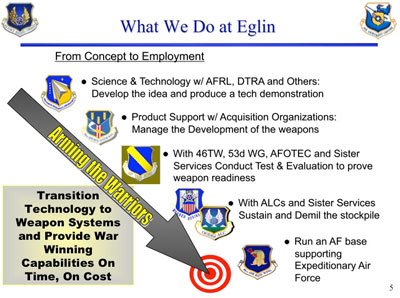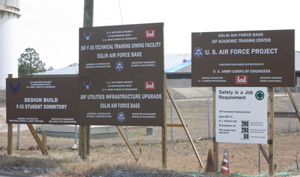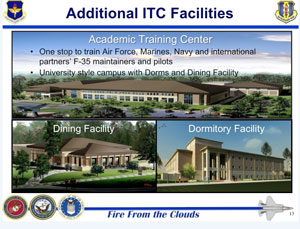SLDinfo visited Eglin Air Force Base in early January and interviewed the senior leadership with regard to various programs, capabilities and approaches to the future. The most compelling aspect of Eglin to an outsider is the confluence of two core capabilities:
-
The first revolves around weapons;
-
the second around shaping joint capabilities.
Both underscore synergy of activities.
Eglin AFB: a Broad Portfolio of Weapons From Concept to Employment
Eglin is the home to the Air Armament Center where Major General CR Davis (formerly PEO of the F-35 program) functions as both the AAC Commander as well as the USAF PEO for Weapons. Given the size of the base, and the collocation of all elements of the weapons development process on the base, Eglin possesses a formidable capability to shape an integrated weapons development process. The process emphasizes an ability to manage weapons development from concept, to deployment, to logistics support of the new weapons (See beside: first video interview with Major General Davis).
The portfolio of weapons at Eglin runs the gamut from air superiority to close combat support. Among the weapons under development or support are the following: the Massive Ordnance Penetrator (MOP) designed for destroying hardened targets with the use of conventional ordnance; the joint air-to-surface standoff missile (JASSM); the miniature air-launched decoy or jammer (MALD/J); the various versions of the small diameter bomb (SDB); and advanced medium-range air-to-air missile (AMRAAM). We will have further discussion of some of these programs in future articles.
Shaping a Road Map for the Future and Cost-Conscious Development Approach to Weapons Development
As Major General Davis underscored, “In a constrained budgetary environment and with a significant need to support the warfighter with new capabilities, our focus is on effective leveraging of capability as well as trying to shape a road map for the future.”
Major General Davis also stressed that he viewed Eglin as having a unique capability to assist the USAF in shaping an effective and cost-conscious approach to weapons development.
“We have elements of the core capabilities of the US Air Force’s future needs. There are four key elements for the future road map:
-
air dominance
-
long-range strike (next generation cruise missile)
-
hardened and deepened targets
-
and close controlled strike.
We have the key USAF programs here at Eglin and with the processes in place, we can shape a future agenda which makes sense fiscally and can effectively meet future warfighter needs.”
“Team Eglin”: A Joint Operations Focus
The other key aspect to synergy is the potential impact of the co-located facilities within Eglin on joint operations. “Team Eglin” includes facilities for AF Special Forces, the Navy Explosive Ordnance training facility (with responsibility for all the forces, including dealing with IEDs), an Army ranger facility, the 7th Army Special Forces Group Airborne (being transferred from Fort Bragg), and small teams from Defense Threat Reduction Agency, JFCOM (joint fires integration and interoperability team) and the US Coast Guard.
As Major General Davis put it: “The synergy of being able to go from the lab to weapons production will soon be mirrored by a joint training capability. Within the confines of our ranges you can take a weapons concept and test it with at least three services, including fielding and integrated training. And you can do that with just what we have spread across Eglin AFB. (See beside: second video interview with Major General Davis).
The F-35 as a Case In Point
All of this makes Eglin the logical location to provide for the training for the joint strike fighter. An integrated training center is being built on the Eglin campus, and this training center will provide training for both pilots AND maintainers (see: upcoming SLDinfo posting on the F-35 training facility the week of January 25th).
There is a clear opportunity for the synergy of the co-location of facilities to interact with the training of F-35 pilots. As Marine Colonel Art Tomassetti, Vice Commander, 33rd Fighter Wing (the F-35 command) underscored: “When a navy pilot wants to practice close air support, he has the possibility of supporting the Army Special Forces Group in an exercise on the base.”
In short, Eglin AFB is a dynamic place where 21st century forces are being crafted. As Major General Davis emphasized: “There is significant potential here for synergy. The challenge is to ensure that this happens. I believe that the F-35 provides a further opportunity to enhance the synergy among the forces.”
———-
***Posted January 24th, 2010





